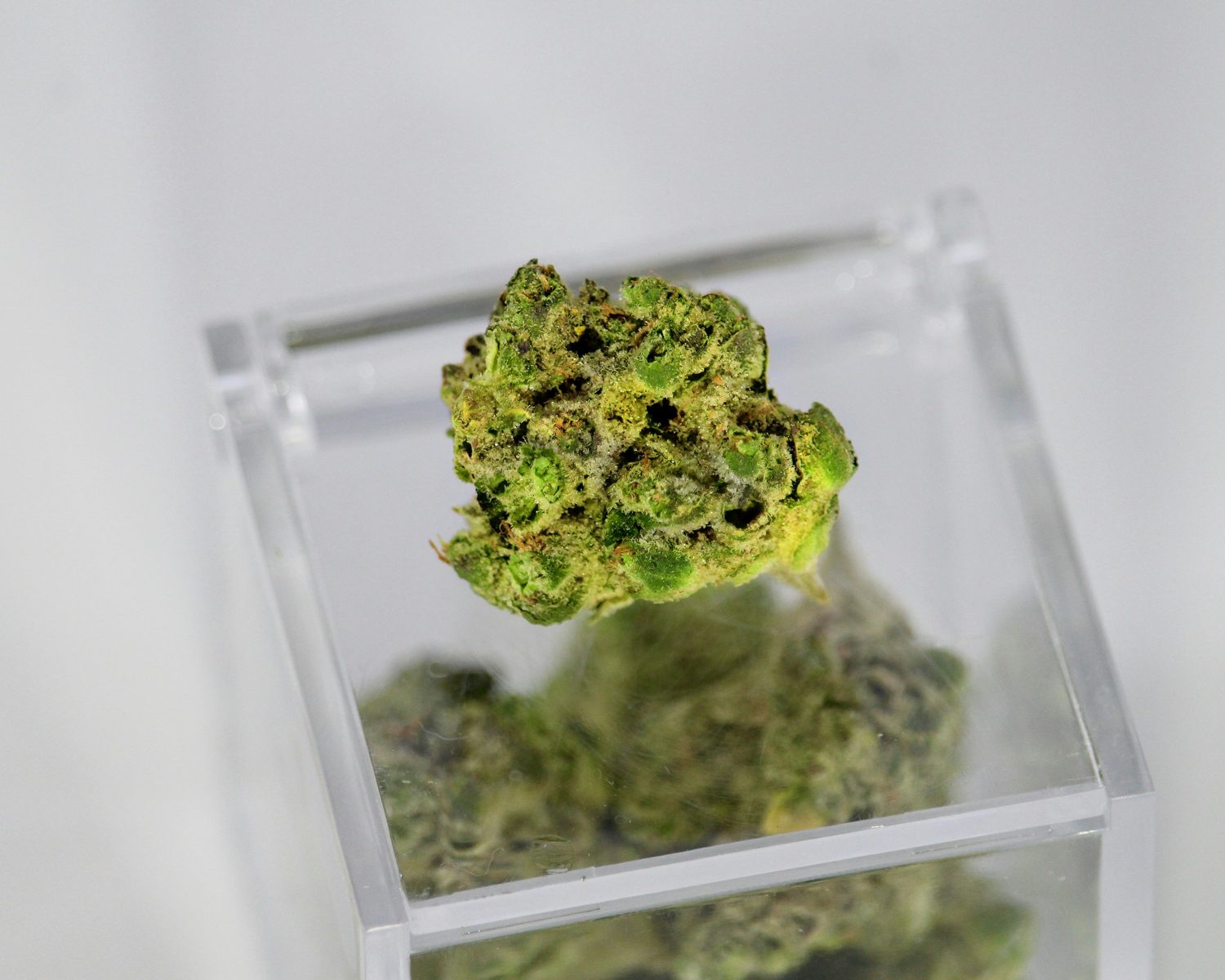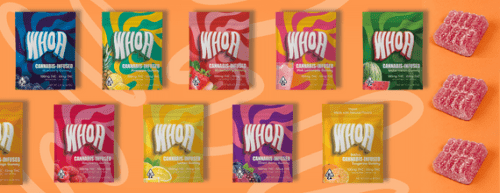For years, weed was talked about in terms of THC percentage. But the real storytellers are cannabis terpenes — the compounds that shape flavor, smell, and even influence the kind of high you feel. They connect cannabis to food, cocktails, coffee, and perfume. They’re why Gelato tastes creamy, why Sour Diesel reeks of funk, and why Lemon Haze smells like a fresh-cut citrus grove.
Open a jar of cannabis and the aroma hits before you even see the flower. Sweet, citrusy, earthy, piney — the scent alone can make your mouth water or bring back memories of the first time you sparked up. That’s the power of terpenes.
This is an exploration of how cannabis terpenes shape cannabis culture, why they matter more than just numbers on a label, and how they’re reshaping the way people consume today. After reviewing tons of products on the Respect My Region Youtube channel, here is a collection of what I’ve learned.
What Are Cannabis Terpenes?
Terpenes are aromatic compounds found in plants, fruits, herbs, and yes — cannabis. They’re what give lavender its calming floral scent, oranges their citrus pop, and pine trees that sharp, refreshing aroma. In cannabis, terpenes are produced in the same resin glands that make cannabinoids like THC and CBD.
Scientists have identified over 150 different terpenes in cannabis. Each strain has its own mix, which is why the flavor, smell, and effects can vary so widely. And while THC and CBD dominate headlines, research shows terpenes interact with cannabinoids to create the “entourage effect,” shaping how each strain feels.
The Science of Flavor and Effect
When you inhale cannabis terpenes, they don’t just tickle your taste buds — they bind to receptors in your brain and nervous system. Some terpenes may enhance mood, others may promote relaxation or alertness.
For example:
- Limonene — Found in citrus fruits. Known for uplifting, energetic vibes.
- Myrcene — Earthy, musky, dominant in mango and hops. Believed to promote relaxation and sedation.
- Pinene — Smells like pine needles. May help with focus and alertness.
- Linalool — Floral, lavender-like. Often tied to calming, anti-anxiety effects.
- Caryophyllene — Peppery and spicy. Unique because it can directly interact with CB2 receptors, potentially reducing inflammation.
This means when you choose a strain based on flavor, you’re also shaping the kind of high you’ll experience.
Cannabis Terpenes in Culture
Cannabis terpenes and their profiles are part of culture just like food and drink. People describe strains the way wine lovers describe vintages or brewers describe hops. “Gassy,” “fruity,” “dank,” “earthy” — these words are part of a shared language that connects consumers and growers.
In places like California, Washington, and Oregon, entire communities geek out over terpene profiles the way sommeliers obsess over tasting notes. Dispensaries highlight “top three terpenes” on menus. Growers brag about hitting rare combinations that make a strain unique. Concentrate makers market live resin for “full terp flavor.”
The Flavor Effect isn’t just about taste — it’s about identity. When someone says they’re a “gassy strain” fan or only smoke citrus-forward weed, they’re signaling who they are in cannabis culture.
Regional Flavor Journeys
California: The Gas Capital
California helped define “gas” as a flavor profile. Strains like OG Kush, Gorilla Glue, and Gelato set the tone for a whole generation of smokers. Heavy, pungent, fuel-like terpenes dominate — the kind of strains you can smell across the room. California culture made “dank” synonymous with quality.
Pacific Northwest: Earthy and Piney
Washington and Oregon embraced strains rich in myrcene and pinene. Blue Dream, Northern Lights, and Dutch Treat were staples, with their earthy, forest-like aromas reflecting the landscape of the region. These flavors connected cannabis to the natural environment.
East Coast: Sour and Funk
The East Coast defined sour. Sour Diesel, NYC Sour, and other funky, skunky strains became cultural touchstones. Sharp, biting aromas matched the energy of New York’s hip-hop and streetwear scenes. Sour became as much an attitude as a flavor.
International: Hash Traditions
In Morocco and Lebanon, hash carries spicy, peppery notes from caryophyllene-heavy cultivars. In India, charas often leans floral and herbal. These flavors come from centuries of cultivation, showing that terpene traditions are just as global as cannabis itself.
Pairing Cannabis with Food and Drink
The Flavor Effect makes cannabis perfect for pairing. Just as sommeliers pair wine with meals, cannabis can be matched with food, drinks, or even music.
- Citrus strains (limonene-heavy) pair with seafood, tropical fruit, or crisp cocktails.
- Earthy strains (myrcene-heavy) work with comfort foods, coffee, and chocolate.
- Floral strains (linalool-rich) complement teas, desserts, and lighter fare.
- Spicy strains (caryophyllene-forward) pair with barbecue, whiskey, or bold cuisine.
Some chefs and mixologists are already building entire dining experiences around terpenes. Cannabis dinners, infused cocktails, and terpene-inspired menus are popping up in legal states, blending culinary culture with cannabis science.
Concentrates and the Pursuit of Pure Flavor
Concentrates have shifted the terpene conversation even further. Products like live resin, rosin, and hash rosin are prized not just for potency but for flavor. The extraction process preserves volatile terpenes, delivering a taste that many describe as “true to the plant.”
Vape cartridges now come labeled with terpene percentages, while dabbing culture obsesses over “terp preservation.” Low-temp dabs became popular because they protect delicate terpenes that would burn off at higher heat.
Flavor isn’t just an add-on — it’s the main event.
The Future of Terpenes
As cannabis legalization expands, terpenes are stepping into the spotlight. Labs are mapping terpene profiles with precision. Brands are marketing products not by strain names but by terpene effects, like “citrus uplift” or “relaxing earth.”
Outside of cannabis, terpenes are being explored for wellness products — essential oils, aromatherapy, even functional beverages. Some companies are isolating cannabis terpenes and reintroducing them into drinks, mocktails, or non-psychoactive products.
The future of cannabis may not be about chasing the highest THC — it may be about chasing the best flavor experience.
Cannabis isn’t just about getting high — it’s about how it smells, how it tastes, and how it feels. Terpenes are the bridge between the plant and the experience. They tie cannabis to food, music, culture, and memory.
Cannabis is a sensory journey.
The next time you crack open a jar, take a moment to appreciate the aroma before you spark. That first whiff is more than just a smell — it’s the beginning of the experience, a flavor story written in terpenes.







